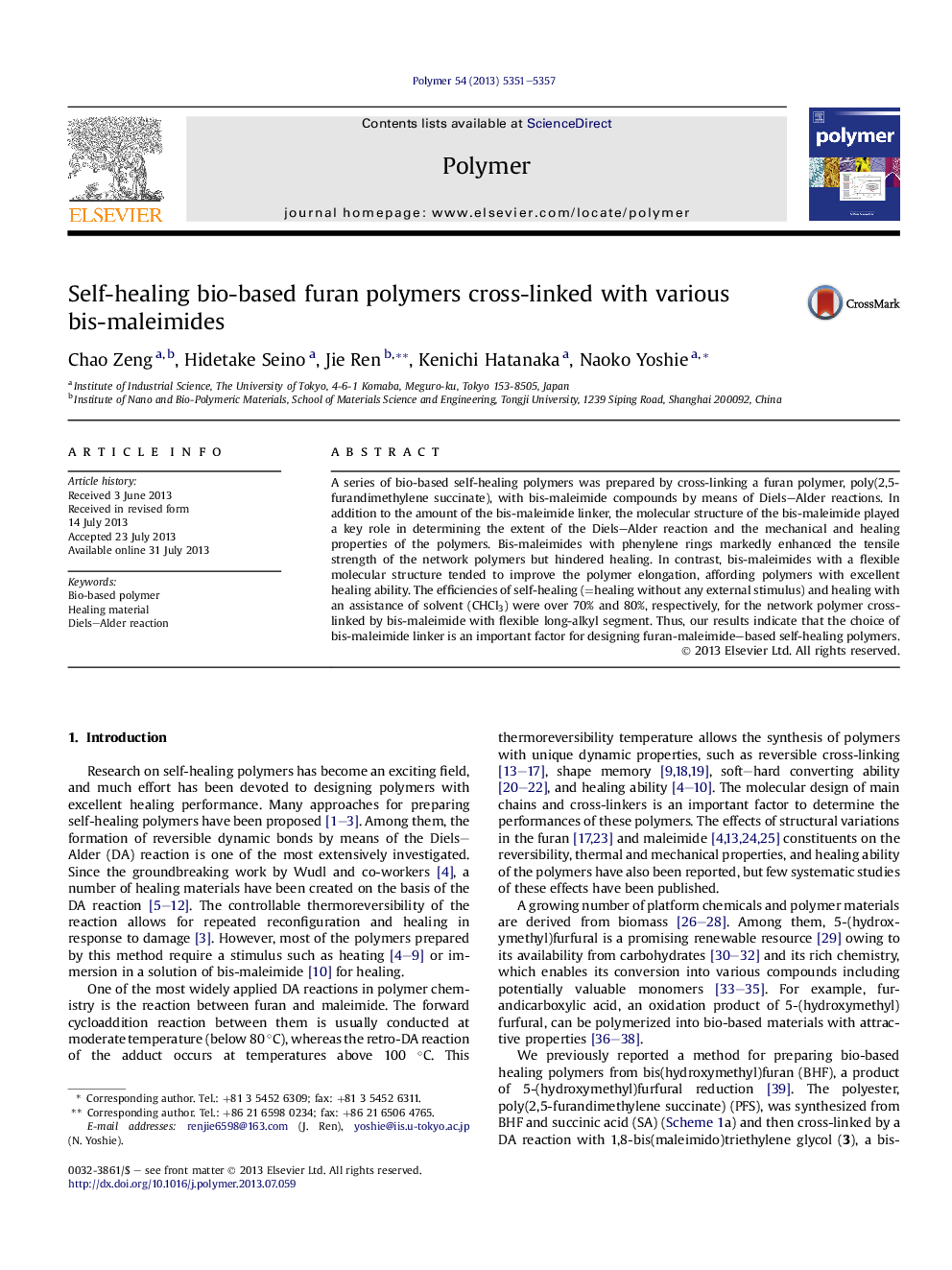| Article ID | Journal | Published Year | Pages | File Type |
|---|---|---|---|---|
| 5182160 | Polymer | 2013 | 7 Pages |
A series of bio-based self-healing polymers was prepared by cross-linking a furan polymer, poly(2,5-furandimethylene succinate), with bis-maleimide compounds by means of Diels-Alder reactions. In addition to the amount of the bis-maleimide linker, the molecular structure of the bis-maleimide played a key role in determining the extent of the Diels-Alder reaction and the mechanical and healing properties of the polymers. Bis-maleimides with phenylene rings markedly enhanced the tensile strength of the network polymers but hindered healing. In contrast, bis-maleimides with a flexible molecular structure tended to improve the polymer elongation, affording polymers with excellent healing ability. The efficiencies of self-healing (=healing without any external stimulus) and healing with an assistance of solvent (CHCl3) were over 70% and 80%, respectively, for the network polymer crosslinked by bis-maleimide with flexible long-alkyl segment. Thus, our results indicate that the choice of bis-maleimide linker is an important factor for designing furan-maleimide-based self-healing polymers.
Graphical abstractDownload full-size image
